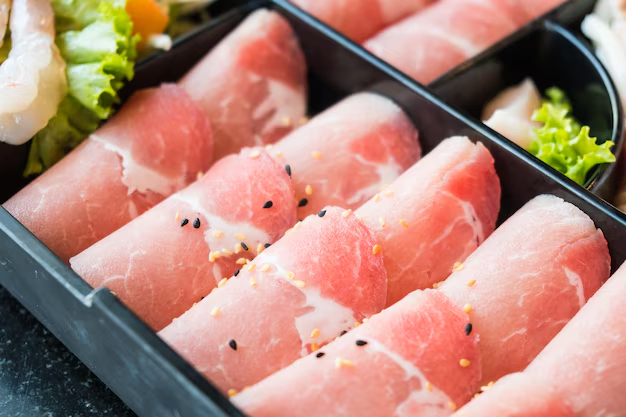How Long Can You Keep Defrosted Shrimp in the Refrigerator?
Shrimp is a versatile and delicious protein, often enjoyed in a variety of global cuisines, from hearty seafood stews to elegant cocktail appetizers. When it comes to cooking with shrimp, however, knowing how to store it correctly can make all the difference to both flavor and safety. One common question that arises in the kitchen is: How long can defrosted shrimp stay safe in the refrigerator? Let's dive into this topic to explore not only the timeline but also safe handling practices, tips for quality preservation, and how to tell when shrimp has gone bad.
🕓 Understanding the Shelf Life of Defrosted Shrimp
Safe Storage Guidelines
Once you've defrosted shrimp, the clock starts ticking on how long it can be safely stored in the refrigerator. As a general rule of thumb, defrosted shrimp can be kept in the fridge for up to one to two days before it should be cooked or discarded. The critical factor here is temperature, as shrimp should be stored in the coldest part of your refrigerator, ideally at a temperature below 40°F (4°C).
Why Timing Matters
Seafood is particularly perishable due to its delicate proteins and the presence of natural enzymes and bacteria. These delicate proteins start breaking down quickly, especially if shrimp isn’t stored properly. By adhering to the one to two-day window, you minimize the risk of spoilage and foodborne illness, ensuring your meal remains both tasty and safe to eat.
🌿 Keeping It Fresh: Storage Techniques
Proper Packaging
To maintain freshness and prevent contamination, pay attention to how you store shrimp in the refrigerator. Here are a few tips:
- Airtight Containers: Use airtight containers to reduce exposure to air and contaminants.
- Vacuum Sealing: If possible, vacuum-seal shrimp, which can further extend freshness by limiting air exposure.
- Wrapping: If airtight containers aren’t available, wrap the shrimp tightly in plastic wrap followed by aluminum foil.
The Role of Temperature
Maintaining the proper temperature in your fridge is crucial. For added security, consider using a refrigerator thermometer to ensure your device is running efficiently and at the correct temperature. If temperature fluctuations are a concern, avoid constantly opening the refrigerator door, as this can invite warm air in and raise internal temperatures.
🔍 Recognizing Spoilage: Signs to Watch For
Knowing how to identify spoiled shrimp is essential for enjoying safe, delectable meals. Here are some tell-tale signs that your defrosted shrimp may no longer be good to eat:
- Odor: Fresh shrimp has a mild sea smell. A strong, unpleasant fishy odor is a sign of spoilage.
- Texture: Shrimp should feel firm to the touch. If it’s slimy or mushy, it's best to err on the side of caution.
- Color: Pay attention to any discoloration. Shrimp should maintain a translucent appearance. Any significant shift towards a grey or opaque color could indicate spoilage.
🔄 What About Refreezing Shrimp?
Is Refreezing Safe?
Refreezing shrimp isn’t usually recommended as it can affect texture and quality. However, if shrimp has been thawed in the refrigerator and has not been left out at room temperature for more than two hours, it can be technically safe to refreeze. Still, this process is not generally advised due to the potential loss of quality in texture and flavor.
How to Handle Refreezing
- Refreeze Quickly: If you decide to refreeze, do it as soon as possible.
- Use Within One Month: Aim to use refrozen shrimp within a month to retain the best possible quality.
🍽️ Maximizing Shrimp's Culinary Potential
Cooking After Defrosting
Once you’ve defrosted shrimp and kept it in your refrigerator for one to two days, it’s time for the fun part: cooking! Shrimp’s versatility in the kitchen makes it an excellent choice for a wide array of dishes. Here are a few ideas:
- Grilling or Sautéing: These methods highlight shrimp’s natural flavors and work well with simple seasoning like garlic, lemon, or herbs.
- Stir Fry: Toss shrimp with your favorite vegetables and sauces for a quick and nutritious meal.
- Seafood Pasta: Pair shrimp with a creamy or tomato-based sauce over pasta for a satisfying dinner.
Quick Recipe Tips
To ensure shrimp cooks evenly, consider the following:
- Even Sizing: Use shrimp of a similar size for uniform cooking.
- Tail Removal: For dishes where shrimp is mixed in with other ingredients, removing tails can enhance the eating experience.
- Quick Cooking: Shrimp cooks quickly—generally in just a few minutes on each side.
⚠️ Safety Reminder: Avoid Cross-Contamination
Best Practices
Handling raw seafood requires attention to detail to prevent cross-contamination. Here are key practices:
- Separate Raw from Cooked: Always use separate cutting boards and utensils for raw and cooked shrimp or other foods.
- Thorough Cleaning: Wash hands, surfaces, and utensils with hot, soapy water before and after handling raw shrimp.
- Immediate Refrigeration: Return unused shrimp to the refrigerator promptly to limit exposure to room temperatures.
📋 Key Takeaways
Here's a handy summary of the essential tips and facts discussed, neatly organized for quick reference:
- 🗓️ Timeframe: Defrosted shrimp should be used within 1-2 days.
- 📦 Storage: Use airtight packaging or vacuum-sealing to preserve freshness.
- ⚠️ Spoilage Signs: Watch for strong odors, slimy texture, and discoloration.
- 🔄 Refreezing: Permitted if initially thawed in the fridge but usually not recommended.
- 🍽️ Cooking: Try grilling, sautéing, or adding to pasta for delicious results.
- 🚫 Safety: Prevent cross-contamination by using separate tools and thorough cleaning.
By understanding these guidelines, you can enjoy shrimp that is not only delicious but also safe. Through proper handling and smart storage practices, you’ll keep your seafood-loving heart happy while maintaining the highest standards of food safety in your kitchen. Enjoy your culinary adventures with shrimp—now with added confidence!
